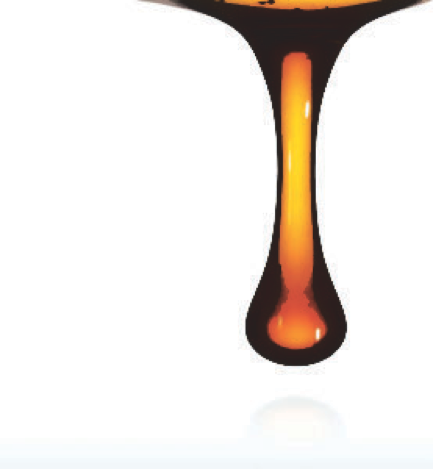THE POWER OF CO 2 EXTRACTION
A SAFER, CLEANER, PURER & FASTER WAY TO
EXTRACT BOTANICAL OILS
A SUPERIOR SOLVENCY

- Non-Toxic. With CO 2 as a solvent for oil extraction, no toxins, heavy metals or hydrocarbon materials come in contact with the extracted oils. Generally Regarded as Safe (GRAS) by the FDA for use in food products and commonly found in carbonated beverages. Our bodies produce it when we breathe!
- Pure. Extracted material is free of residual solvents.
- Natural. Other extraction solvents, such as hydrocarbon-based propellants like propane and butane, hexane and pentane, or ethanol/alcohol mixtures, require additional distillation or purging beyond the extraction process to separate the solvent from the extracted oil. CO 2 has a very low boiling temperature and wants to be a gas at room temperature, so it naturally separates from the extracted oil, the same way a soda goes “flat.”
- Non-Flammable. Does not require costly explosion-proof facilities like flammable solvents do.
- Cold. CO 2 extractions can be done at temperatures native to the plant, minimizing thermal degradation of the plant material and the extracted oil.
- Adjustable. The solvency power of CO 2 can be adjusted simply by increasing or decreasing pressures and/or temperatures. The ability of the CO 2 to selectively extract affords the ability to create unique extractions that have varying levels of desirable oils and waxes. Additionally, less desirable plant constituents, like chlorophyll, can be “de-selected”.
- Cost-Efficient. CO 2 is readily available and widely used throughout a number of industries. Apeks CO 2 oil extraction systems recirculate and subsequently recover 95% of the CO 2 used in each extraction.
- Environmentally Friendly. Industrial CO 2 for extractions comes from byproducts primarily hydrogen and ammonia manufacturing and fermentation for ethanol.
- CO 2 used for extractions does not contribute to the overall atmospheric CO 2 levels.
THE DIFFERENCE BETWEEN SUPERCRITICAL/SUBCRITICAL CO 2 EXTRACTION
- CO 2 is unique because its solvency power can change by simply adjusting the temperature and pressure during the extraction. When the pressure and temperature of the CO 2 are above 1083psi AND 88F, the CO 2 is considered supercritical. If the temperature is drops below 88F, the CO 2 changes to a liquid and is referred to as subcritical.
- Both supercritical and subcritical CO 2 act like a solvent and can extract oil from plant materials. When the pressure of the CO 2 is decreased (generally to below 600psi) it converts to a gas and loses its ability to hold oils in solution and separates the extracted oil from the now gaseous CO 2 .
SUBCRITICAL
- With respect to plant oil extractions, subcritical CO 2 has lower solvency power and thus tends to pull mostly lighter oils and leave behind most waxes, paraffin and resins. Subcritical CO 2 is also relatively cold and therefore very effective in extracting temperature-sensitive volatile oils and terpenes. Subcritical CO 2 is ideal for extracting and preserving light oils from the plant material. Extraction times can be longer and yields are generally lower due to the fact that there will still be residual waxes and resins that are left behind in the plant material.
SUPERCRITICAL
- Supercritical CO 2 can be a much stronger solvent than subcritical CO 2 . In addition to extracting lighter oils, supercritical CO 2 can extract the higher molecular weight materials (like waxes, paraffins, lipids and resins) from the plant, allowing for higher yields and a more complete extraction. The stronger solvency power also makes the extraction times faster. Supercritical CO 2 extractions at very high temperatures and pressures (higher than 120F and 5000psi) can cause thermal degradation of the oils, and when extracting green plant materials can have the potentially negative consequence of extracting chlorophyll.
FRACTIONAL EXTRACTIONS ARE IDEAL TO
COMBINE THE 2 FORM OF EXTRACTION
- To perform a “fractional extraction” we first extract at lower temperatures and pressures to remove the lighter, temperature sensitive volatile oils, and then subsequently extracting the same material at a higher pressure and temperature to remove the remaining oils, waxes, etc. This approach is better than fractional separation (where extractions are done at high temperature and multiple separators have cascading pressures) because the temperature sensitive volatile oils and terpenes are never exposed to high heat.
COLD SEPARATION
- Heat is the enemy of any botanical oil. Cold separation is critical for maintaining THCA or CBDA of cannabis extraction because cold separation will not decarboxylate extracted oils in the separator. Transparent glass-like cannabis shatter requiring only vacuum oven post-processing can also be made. State of the art Supercritical systems are designed so that the extracted oil stays cold (less than 40F) after it has been removed from the plant material to minimize thermal degradation.
Tab 1
Tab Content goes here
Tab 2
Tab Content goes here


